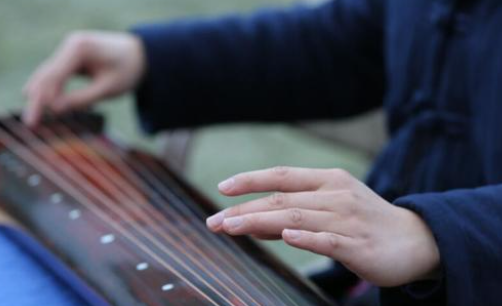The evolution of guqin notation
The existing guqin pieces are notated by the special notation of guqin.
The piano score in ancient times used the written score. The so-called written notation is to describe each sound in the notation, which string, which emblem position, the specific fingering movements of the left and right hands, the severity and speed, etc. of each sound in the notation. The earliest extant written score is the "Jie Shi Diao You Lan" volume handed down by Qiu Ming in the third year of Chen Zhenming in the Southern Dynasty and written by people in the early Tang Dynasty. This is the oldest extant qin music score in the world. (See Figure 7) "However, the text is extremely complicated, with two lines of movement, and it does not complete a sentence. Later, Cao Rou made a subtraction method, which is especially easy to understand." (Ming Jiang Keqian "Qin Shu Da Shi Pu")

In the late Tang Dynasty, Cao Rou, a guqin master, created the method of subtraction. Technique and emblem position; the right hand uses a certain finger, its technique and chord order. The score recorded with this kind of notation is called the minus-character fingering spectrum. For example, the first sentence of the written score of "Youlan": "Ye (ie evil character) lies on the middle finger ten and a half inches, and allows to press the business, and the index finger and the middle finger both lead the palace and the business." It is concise and righteous, and the text is coherent and sound.”
Later, after gradual improvement, this type of reduced-character spectrum has basically been finalized in the Southern Song Dynasty. Since then, with the popularization of printing technology, in the Ming Dynasty, most of the guqin scores accumulated after Cao Rou, as well as the Tang and Song legacy scores, were mostly printed albums, including more than 660 qin songs with different names, three. More than 1,300 different pedigrees were written down using this type of reduced-character pedigree. (See Figure 8) Among them are ancient qin songs, such as "High Mountain", "Flowing Water", "Yangchun", "White Snow", "Pheasant Flying in the Morning", "Black Night Cry" and so on. There are well-known heroic stories and folklore, such as "Guangling San" with the theme of "Nie Zheng assassinating the King of Han"; "; "Da Hu Jia" and "Eighteen Shots of Hu Jia" with the theme of "Wenji Returning to Han"; "Feng Qiuhuang" with the theme of "Sima Xiangru and Zhuo Wenjun Free Love"; , Recluse life, such as "Yangguan Sandie", "Fisherman's Questions and Answers", "Putting Clothes", "Wine Crazy", "Firewood Song", "Fisherman Song" and so on. In the late Tang Dynasty, Chen Kangshi and Chen Zhuo were able to sort out a large number of piano scores for later generations, and Cao's contribution is indispensable!
 渝公网安备 50010702504639号
渝公网安备 50010702504639号